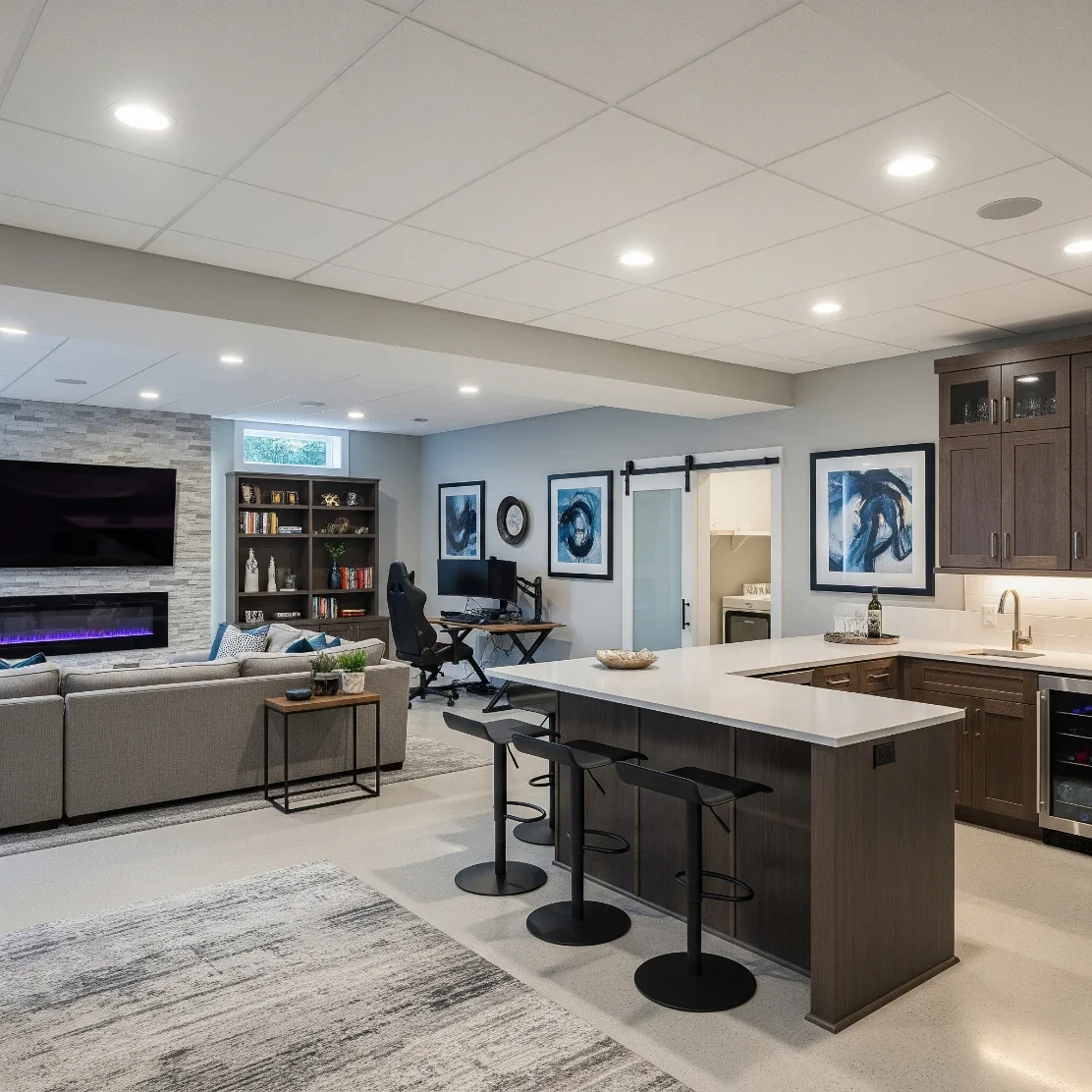Transforming Your Basement: The Key Steps to a Successful Renovation
Discover the key steps to a successful basement renovation—covering design, planning, and upgrades to create a functional, stylish space.
Why Renovating Your Basement Matters
Most homes rarely use their basements. It's generally just a dusty storage area. But turning this stealthy level into a useful gathering or living space would add a lot of value to the house and give the growing family a new place to hang out or a new hobby. Basement productions are not just for looks; they are complicated and take a lot of work and a deeper grasp of plumbing, electrical systems, and construction. That's why most homeowners choose to hire a trustworthy renovation contractor. From this perspective, the contractor is an important partner who helps the homeowner understand building codes, make a realistic timeframe and budget, and make sure that every last detail is done correctly. Choosing the proper partner for the project is the first step to avoiding expensive mistakes and getting a satisfactory result.
Planning Your Basement Renovation
A precise and detailed strategy is the first step to a successful basement renovation. Setting goals for the finished area is crucial before beginning any building or wiring work.
Questions to consider:
Will it be a family area for movies and relaxation?
Should it serve as a study, guest room, or playroom?
How can every square inch of space be used efficiently?
This planning stage is also the time to think about ceiling heights, lighting choices, and where new walls and doors will go. Having a clear vision from the start makes the process smoother and ensures the renovation fits your family’s lifestyle.
Addressing Structural and Moisture Issues
Once you have your plans, the first steps of the physical restoration are mostly about making sure the structure is sound and the area is healthy.
Waterproofing and Mold Removal: Basements can often get wet; waterproofing and mold treatment must be handled correctly.
Framing and Insulation: Framing the walls and installing proper insulation will keep the basement warm, comfortable, and energy-efficient.
These steps transform the basement from a cold, damp storage area into a space ready for finishing.
Bringing Your Basement to Life
This final stage is where your design truly takes shape. At this point, you can focus on finishes and details such as:
Flooring (luxury vinyl tile or engineered wood for moisture resistance)
Drywall, ceilings, and fixtures
Lighting design (a mix of recessed lighting, accent lights, and lamps)
Personal touches like built-in shelves, a wet bar, or even a fireplace can make the space unique and inviting.
Final Thoughts
Turning a barren room into a finished, usable space is a satisfying project. A well-renovated basement adds immediate value to your home and gives your family a comfortable, functional area to enjoy for years to come.






